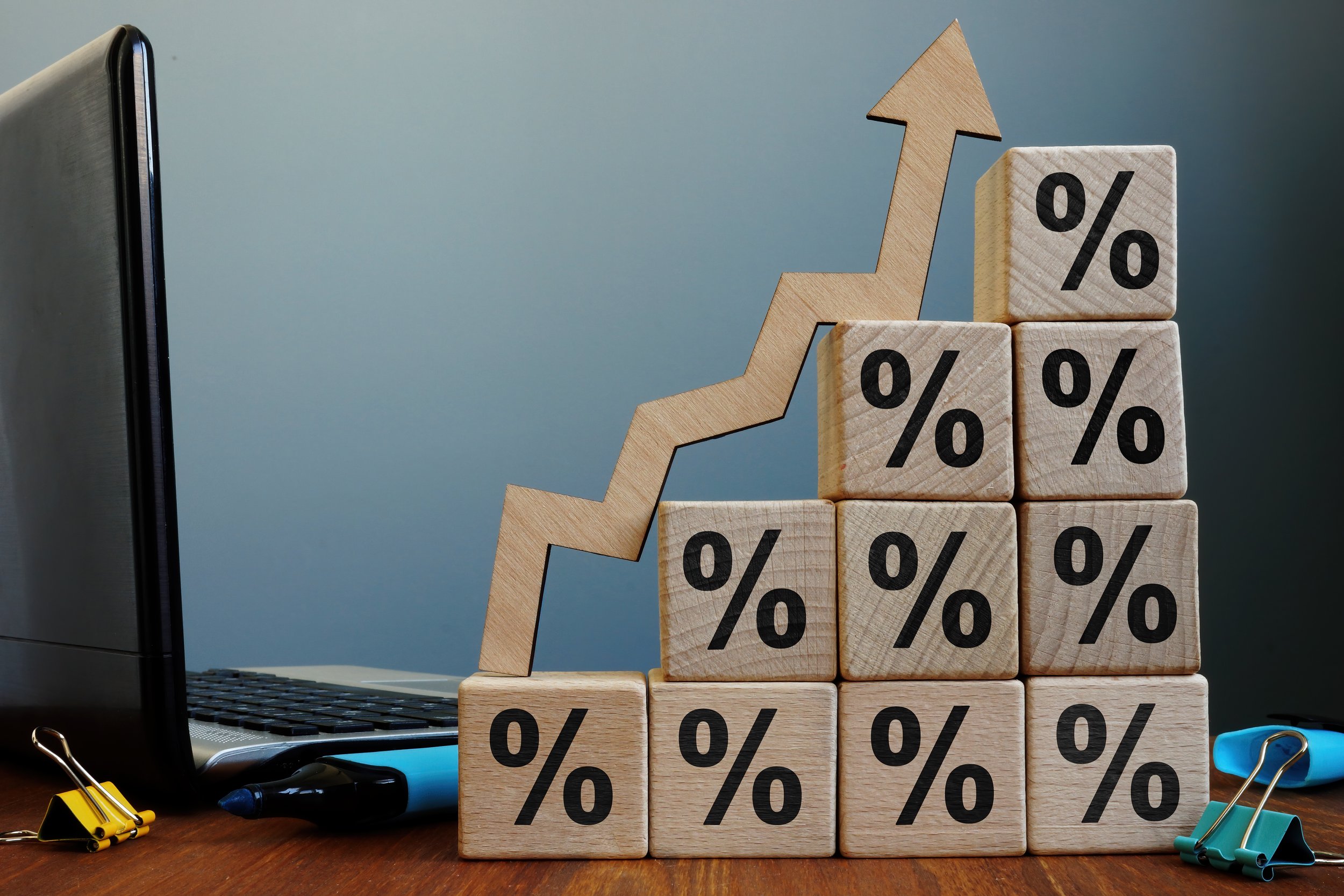What to Do With Old Series EE Savings Bonds?
Series EE Savings Bonds have been around for over three decades, which means that you may own some of them. You could have purchased them yourself, received them as a birthday gift, or even inherited them. No matter how you acquired them, if you currently hold Series EE Bonds then you should understand what they are. In this post I’d like to address:
Key Takeaways:
· What are Series EE Savings Bonds?
· The difference between Series EE vs. Series I Bonds
· What Should you be doing, if anything with older EE Bonds?
· Are new Series EE Bonds a good investment?
What are Series EE Savings Bonds?
The US Treasury issues two types of Savings Bonds, the Series I and the Series EE bonds. The Series EE Bond is a non-marketable, interest bearing bond which means that it cannot be traded on the open market. These bond do not pay regular coupon interest which means that many of you have never received a cent from your Series EE bonds. These bonds must be held for at least one year but will be subject to a penalty if redeemed in the first five years and can be held for a maximum of 30 years. All Series EE bonds issues after June 2003 also come with the guarantee that they will be worth at least double what you paid for them within 20 years.
Series EE Bonds issued after May 2005 earn a fixed rate of interest that is determined when the bond is purchased. The current rate for Series EE bonds issued between May 1, 2023 and October 31, 2023 is 2.5%. If you were to purchase the bond today, you would receive that 2.5% interest for the first 20 years, with potential adjustments to the rate from years 20-30. The interest is compounded semiannually, which means that every six months the accrued interest over that period is added to the principal amount to create the new principal amount used for the next interest calculation.
What happens if you have Series EE Savings Bonds that were purchased before May 2005? That would depend on the year they were purchased. Those issued between May 1997 and April 2005 earn a variable rate of interest that changes every 6 months, and the current rate is 3.41%. Those issued between May 1995 and April 1997 also pay a variable rate of interest that changes each month, but the current rate is slightly lower at 3.22%. Lastly, those issued between 1980 and 1995 have mostly been redeemed. These Series EE bonds were issued at half their face value and accrued interest until they reached par value after 30 years.
The difference between Series EE vs Series I Bonds
As stated above, the US Treasury issues two types of savings bonds, the Series EE and the Series I. We have discussed the Series EE so now let’s review the Series I bond. The Series I bond is commonly known as the I bond, which rose in popularity over the past couple of years. The I stands for inflation. I covered I bonds in greater depth in my podcast episodes Are I Bonds Still Worth It? and Increase Your Cash Return with I Bonds if you want to go back and listen to those episodes.
These bonds are composed of a fixed rate determined at issue and a variable rate determined by inflation as measured by the consumer price index urban, or CPI-U, every 6 months. Due to the high inflation we’ve been experiencing in the U.S. over the last few years, I bonds paid a composite rate of as high as 9.62% in May of 2022 when inflation was soaring. The rate is announced every 6 months on May 1st and November 1st. The May 1st rate was announced a few weeks ago, and is 4.3% for new purchases, part of that rate includes a fixed rate of .90%. However, you earn half of that or 2.15% as the rates reset every 6 months. It’s worth noting that the fixed rate of .90 is the highest fix rate since November of 2007, when it was 1.2%.
For any existing Ibond holders the rate for the next 6 months is 1.69%, plus an fixed rate they would be eligible based on when they purchased the bonds. This variable rate will then change again on November 1st of 2023, so to take advantage of this 4.3% or 2.15% for the next 6 months for new purchases, they must be completed by November 1st 2023.
Unlike the new (after May 2005) Series EE bonds, the interest rate paid by I bonds changes every 6 months. Therefore, the I bond currently pays a higher rate of interest for the next 6 months, on annualized number, but it could go down if inflation were to go down in the U.S. In contrast with the Series EE bond allows you to lock in your interest rate for up to 20 years at time of purchase.
Another difference is the guarantee provided. New Series EE bonds are guaranteed to at least double within 20 years, while I bonds are guaranteed to never pay an interest rate of less than zero or the fixed rate at purchase. So any I bond purchases today could earn you more money if inflation stays high, but over the long term the Series EE bonds might be better.
Series EE and I bonds both compound interest semiannually which means they pay interest twice a year. They have the same early redemption penalties causing you to lose 3 months of interest if you redeem in the first 5 years. They are subject to Federal income tax but not State or local income tax. They both also limit your purchase to $10,000 per year per social security number.
As you can see, the Series EE bond provides better guarantees and allows you to lock in a rate of interest today. If you thought interest and inflation rates were likely to go down and wanted to hold a bond long-term, then it may be wise to purchase them to lock in the current rate. To contrast, if you only wanted to hold the bond for 1-5 years, then the I bond could be a better investment because there is a chance that inflation stays elevated for an extended period. Since we cannot predict the future, you must do your own due diligence before making such decisions.
What Should you be doing, if anything with older Series EE Bonds?
If you are currently holding Series EE Bonds, the first thing you should do is calculate how much they are worth. Treasury Direct has a free calculator on their website that does not require you to sign in to use it. What the calculator does require, is for you to input the Series, Denomination, Bond Serial Number, and Issue Date. If you can find that information, you will be able to see Value today (Main Priority), but also the total interest earned which is important for you to see. You could use this information to determine how much interest the bond has earned on average and if that interest is competitive with other rates in the market.
If you decide that you want to continue to hold the Series EE bonds, then there are a few things that you should consider. First, the default tax method is for the holder to pay tax on the total accrued interest at redemption. Therefore, this could lead to a large tax bill in the year of redemption depending on how much you had invested and for how long. This could make sense for someone who plans to hold their Series EE bonds until retirement when income is assumed to be lower. Ideally, this redemption would take place in a year where you fall in a lower tax bracket so that you can reduce your total tax bill. These are taxed as ordinary income which for most people is higher than capital gains tax.
If you want to avoid this large one-year tax bill at redemption, then there are a few options. You can elect to pay taxes on the accrued interest earned each year. This way you can spread the taxes out so the impact on your annual tax bill will be minimal (depending on amount). All of the accrued interest that you earned but had not paid tax on will be reported in the year of election. Therefore, you could still end up with a large one-time tax bill if you have held the bonds for a long time.
Another option is to use for them for higher education costs. However there are some restrictions with doing this. One is that the bonds need to be in your name and you need to be at least 24 years old. So if you’re trying to use these savings bonds to pay for your children’s education, then you should put them in your name. Secondly you have to fill out form 8815, and there are income limitations to take this exclusion. Currently your MAGI must be under $100,800 if you file single, head of household, or qualifying widow or $158,650 if married filing jointly. If you income is higher than you don’t qualify for any exclusion.
Are Series EE Bonds a good investment?
There are many things to consider when determining the suitability of an investment in a client’s portfolio. If I had to describe them, Series EE Bonds are a low-risk investment that earn a fixed rate of interest determined at purchase. These bonds are an option for the fixed income portion of a portfolio. However, they currently pay 2.5%, is that still a competitive rate?
One alternative investment would be Certificates of Deposit (CD’s). Currently, 0-1 year CD’s pay 5.102%, 1-3 year pay 5.124%, 3-5 year pay 4.989%, 5-7 year pay 5.058%, and 10-20 year pay 4.882%. There are some similarities between CD’s and Series EE bonds as both provide low risk and pay a fixed rate of interest.
However, some differences are Series EE bonds can be taxable at maturity where CD are taxable each year. Series EE bonds also have a purchase limitation of $10,000 per year per social security number and CDs do not. Series EE bonds can also be held for up to 30 years and you’d be hard pressed to find a 30 year CD. Series EE bonds also have a $25 minimum and CD generally have a $1000 minimum. You also can’t redeem Series EE bonds for 1 year and you can generally redeem a CD at any time, although you might lose some interest. So it really depends on your time horizon, if you want current income, and the amount you are investing as to what may make sense for your portfolio.
Another alternative investment to consider is a Money Market Funds. Funds such as the Schwab Advantage Value Fund, available through a Charles Schwab Brokerage account (Ticker: SWVXX), currently has a 7-day yield of 4.68%, and a 0.34% annual expense ratio. Therefore, net of fees you would earn 4.34% per year and could sell out of the money market fund anytime during normal trading hours. Money market funds are not guaranteed and they could lose value, thought it is a remote possibility.
However, the benefit to Series EE Bonds is that you can lock in the current interest rate for 20 years with the guarantee that your investment will at least double within that time frame (if issued after May 2005).
If you know about the rule of 70 it allows you to calculate how long it will take your money to double based on a fixed rate of return or you can calculate the return based on how long it took your money to double. For example, if your money could double in 10 years, that would be a 7% annualized return.
How did I calculate that, I divided 70 by 10 and that gave me 7. To calculate the rate of return on the Series EE savings bonds, I divide 70 by 20 and that gives me 3.5%. 3.5% is your annualized return on a Series EE bond purchased today if you hold it for the next 20 years. Is that a good investment? It is hard to tell. If interest rates go down in the future it may be, but if inflation stays high for a number of years into the future, 3.5% may not keep pace with inflation.
Money Market funds also currently pay high rates of interest, but their rate is not fixed. It generally adjust very 7 days based on the interest rate set by the Federal Reserve Bank (The Fed). For example, if the Fed were to reduce interest rates, then money market rates would also decline.
Whether you are looking for a lower-risk option to park your savings or a predictable income stream during retirement, there are a variety of fixed income instruments available to meet your needs. However, it’s important to remember that the suitability of each investment will depend on your own unique financial situation, goals, and risk tolerance.
Therefore, before making any investment decisions, it may be wise to consult with a fee-only financial advisor who can help you assess your situation and determine the best options. You can follow the link to schedule a free consultation where we can determine if your situation matches our expertise.


